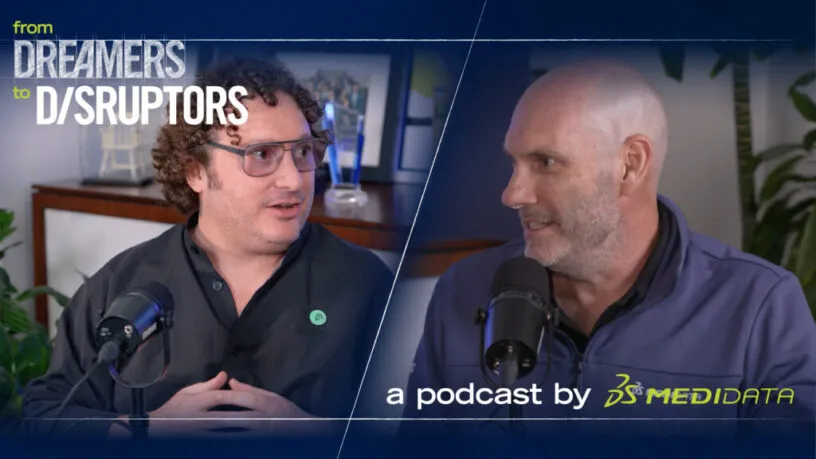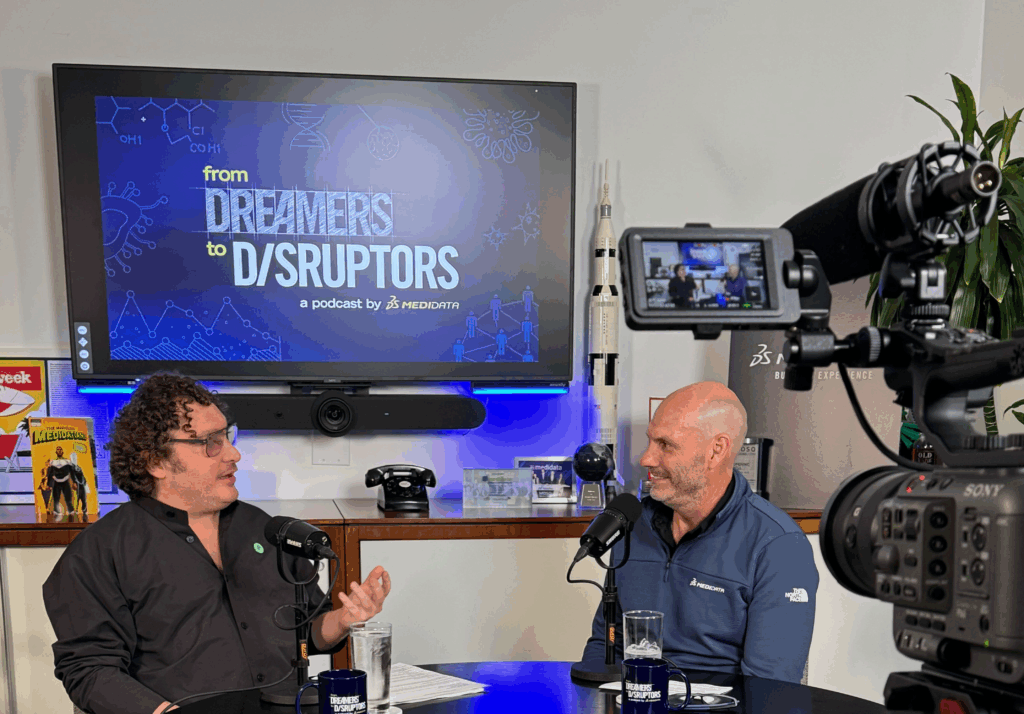David Benshoof Klein Discusses Prescription Digital Therapeutics

Welcome to the Clinical Minds “Innovator Insights Corner,” where we’ll be sharing fascinating stories, perspectives, and predictions from the guests of ‘from Dreamers to Disruptors’, a podcast by Medidata exploring life sciences innovation and the visionaries behind it all.
Thanks to the spread of smartphones, we now live in a digital, highly connected world. Prescription digital therapeutics seek to take advantage of this fact by supporting traditional therapies with regulator-approved, online and app-based solutions that open up new avenues of treatment and recovery for patients.
David Benshoof Klein is CEO of Click Therapeutics, one of the leading innovators in digital therapeutics and software-enhanced (SE) drug development. His company is pioneering treatments for migraine, depression, and a host of other conditions, giving him a unique insight into this fast-developing area of healthcare, which promises transformative benefits for both pharmaceutical companies and patients.

Behavioral Change through Digital Therapeutics
Click Therapeutics’ origins lie in the spread of smartphones. David noticed how universal they had become, and how they were having a major impact on people’s behavior at a population level.
“I was working with the head of clinical neuropsychiatry from Cornell at the time, and we surmised that, in addition to the behavioral modification, [smartphones were] also rewiring people's brains,” David tells Medidata CEO Anthony Costello. “So we thought, ‘If we could harness this power of behavioral and cognitive modification to target diseases, that could be as good, or potentially better, than medications. [This technology] could be combined with medicines to be safer and more efficacious treatments.’”
Our day-to-day behaviors can have a huge impact on our health and wellbeing. Digital therapeutics help users track things like their sleep hygiene and exercise, offering advice or frameworks for them to adopt new behaviors that will help treat their conditions—either together with another medication or as a standalone therapy.
“If you look at migraines, for example, we can help to harmonize sleep patterns. If someone's going to sleep at 9pm one night and 1am the next, that can really exacerbate their condition.”
– David Benshoof Klein
Prescription digital therapeutics can identify patterns in behavior that exacerbate negative outcomes related to the condition. “If drinking coffee at 6pm is part of your problem, the program will let you know that,” says David. “It identifies that quickly, and messages you about it to drive home that that's part of your problem. And if that's not your problem, you don't hear about it.
“I think it's important for people to understand that we’re not just using behavioral mechanisms to treat diseases,” he continues. “We're marrying those behavioral mechanisms with proprietary, patented, or patent-pending neuromodulatory tasks that are addressing specific circuits in the brain that we believe are faulty—whether because of a drug or the disease itself.” Click Therapeutics has recently made progress in treating pain, fatigue, anxiety, and depression in breast cancer patients. We’re only beginning to explore the potential benefits that behavioral change through digital therapeutics can have for patients across a host of conditions.
Capturing Data and Value with Digital Therapeutics
By creating a link to patients directly through their devices, digital therapeutics can transform the user's relationship to pharma companies. More than a regular (or irregular) trip to their doctors’ office or the local pharmacy, digital therapeutics could become the most frequent point of contact between patients and the wider healthcare infrastructure.
Day-to-day interactions will occur in these apps, delivering real-world data to their creators and valuable insights to their users.
This gives pharma companies the opportunity, as David puts it, “to transition from the perception that they are ‘pill manufacturers’ to being seen as holistic providers of healthcare solutions.” He says we’re at a “tipping point” with patients’ relationship to biometric tracking through their devices, and the pharmaceutical industry needs to be proactive in grasping this opportunity. “[Otherwise], all of a sudden, Nike is going to know if a patient’s GLP is working, but the pharma company won’t. That's not going to work.”
“There's a whole universe there waiting to happen that I would call a patient-centred experience in healthcare. Somebody is going to need to own that, and lots of companies would want to.”
– Anthony Costello
David foresees a shift in the relationship between pharma companies and the public that will be similar to what was seen during the pandemic. Suddenly, everyone knew where their vaccines were coming from and were forming opinions on different manufacturers in a way they never had before.
“I think that that's where we're headed,” says David. “People are going to be like, ‘I'm on the X company GLP, that has this amazing experience.’ I would encourage companies to embrace that. People are going to know the brands and the experience that comes with them, and they're going to want to be on the treatments that offer the most user-friendly, patient-focused experiences.”
Regulatory Oversight of Digital Therapeutics
Digital therapeutics are more than just health and wellness apps. Like any other treatment, they go through rigorous clinical trials and regulatory approval to demonstrate their efficacy and safety before they can be prescribed to patients.
Emerging regulations and guidance specifically targeted at digital therapeutics are a clear indication that governments are recognizing the growth in these technologies, and that they will play an important part in public health in the future.
In late 2023, the FDA published the Regulatory Considerations for Prescription Drug Use-Related Software (PDURS). David points out that PDURS established “if a software is a medical device and demonstrates an additional clinically meaningful benefit to a drug, that benefit can be included directly on the drug label.”
Countries around the world can take very different approaches to regulatory oversight of new treatments. But while PDURS is US legislation, David says that “these medical device regulations usually harmonize globally. We’re already seeing some countries embrace PDURS.”
Digital therapeutics adoption is accelerating across Europe; as regulations continue to harmonize globally, the value of these technologies to pharma companies will continue to grow. The organizations that get a head start with prescription digital therapeutics will be best placed to take advantage of this opportunity, capturing valuable data and creating novel treatments that will change the lives of patients worldwide.
Listen to David Benshoof Klein and Anthony Costello’s full conversation in from Dreamers to Disruptors Episode 5 to dive deeper into the art of designing digital therapeutics, and how Medidata and Click Therapeutics are working together to connect our partners with these new technologies.
Contact Us
